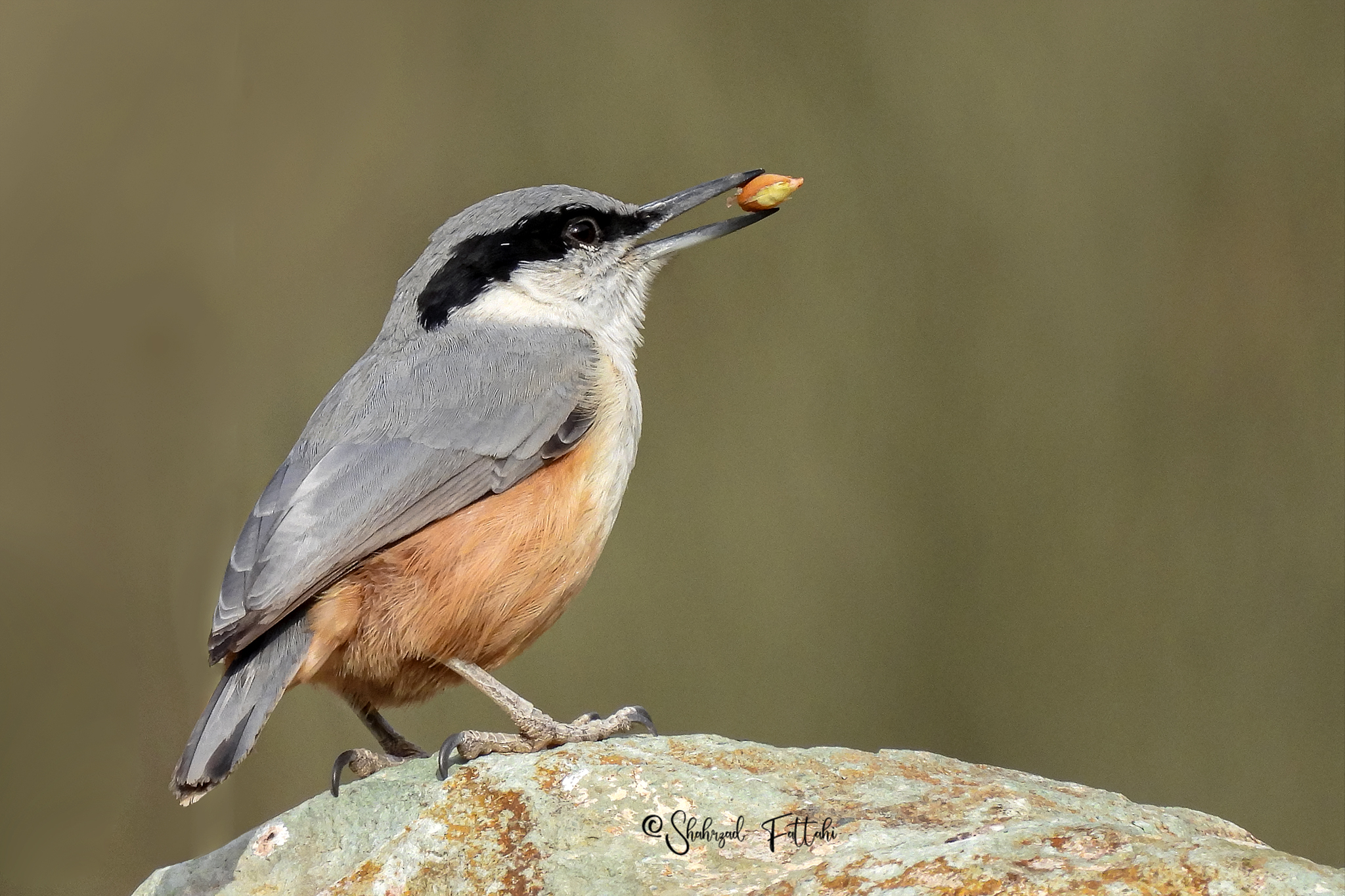Armeense Grote Rotsklever
Sitta tephronota obscura · Armenian Rock Nuthatch
 Armeense Grote Rotsklever ·
Sitta tephronota obscura
·
22-01-2022 · Shahrzad Fattahi
Armeense Grote Rotsklever ·
Sitta tephronota obscura
·
22-01-2022 · Shahrzad Fattahi
| Datum | 22 January 2022 |
|---|---|
| Locatie | Tehran / Iran |
| Fotograaf |
|
| Bekeken | 3138 × |
This attractive species also breeds in the mountains around Tehran. |
Discussie
George Sangster
·
22 August 2022 14:26, gewijzigd 22 August 2022 14:30
Beautiful photograph, Shahrzad! If you have other high-quality photographs from Iran, feel free to post them here. Photographs of local subspecies of common 'European' species such as Green Woodpecker, Tawny Owl, European Robin, and Common Nutchatch would be very interesting.
Max Berlijn
·
22 August 2022 16:18
Er was toch (genetisch??) iets met deze soort in een bepaald gebergte in Iran??
George Sangster
·
22 August 2022 17:16, gewijzigd 22 August 2022 17:18
Yes, see:
Elverici, C, Önder, BŞ & Perktaş, U 2021. Mitochondrial differentiation and biogeography of rock nuthatches. Ardea 109: 215-227.
Rock Nuthatches comprise two morphologically similar species: Western Rock Nuthatch Sitta neumayer and Eastern Rock Nuthatch Sitta tephronota, with several subspecies within each species. These two species are closely related, and the two together are often considered an offshoot of the Sitta europaea group. The Western Rock Nuthatch is distributed across the Balkans to the Caucasus and Iran while the Eastern Rock Nuthatch is distributed across Eastern Anatolia, Iran, Afghanistan, Turkmenistan and Tajikistan. Using partial mitochondrial ND2 and ND3 gene sequences from populations throughout the distribution ranges and ecological niche modelling, we investigated the genetic structure and biogeographic history of these bird species. Two well-differentiated and supported clades in each species indicated a reciprocal monophyly with no gene flow between birds in the Zagros Mountains and other populations. Ecological niche modelling suggested population contraction in their potential habitat during the Last Glacial Maximum. The genetic differentiation in Zagros Mountains indicates that the post-glacial colonization of most of the Rock Nuthatch distribution range occurred from refugia located elsewhere than the Zagros Mountains. Given that Rock Nuthatches in the Zagros Mountains have long constituted an isolated population, there may be two phylogenetic species within each Rock Nuthatch species. Further genetic studies should be performed for taxonomic clarification.
See also:
Leonovich, VV, Demina, GV & Veprintseva, OD 1996. [To the taxonomy and phylogeny of rock nuthatches: Sitta neumayer rupicola Blandford, Sitta (tephronota) obscura Zarudny et Loudon, Sitta tephronota iranica Buturlin and Sitta tephronota tephronota Sharpe.] Byulleten Moskovskogo Obshchestva Ispytatelei Prirody Otdel Biologicheskii 101(4): 29‑38. [In Russian, English summ.]
Yousefi, M, Kaboli, M, Eagderi, S, Mohammadi, A & Rezaei, A 2015. Morphometric variation in Sitta tephronota dresseri populations along Zagros Mountains. Taxonomy and Biosystematics Journal 7(22): 23-34. [in Farsi, Engl. Summary]
Eduard Sangster
·
23 August 2022 10:40
The taxa of Western Rock Nuthatch in Iran are (also) interesting as they lack the black mask and only have a small dark eyebrow.
Shahrzad Fattahi
·
26 August 2022 08:09
Thank you @ George Sangster for your explanation and I have photos of different species from Iran that I will post here in due course and I am glad that it will be noticed.
Gebruikers van het forum gaan akkoord met de forumregels.
